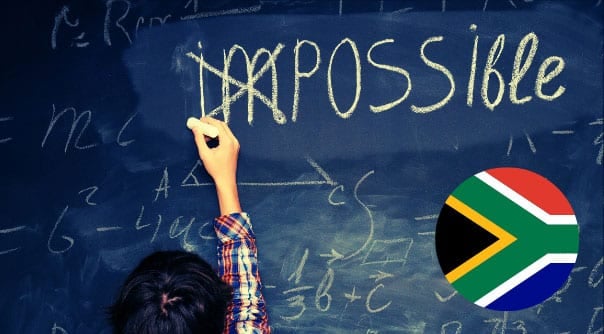
It has become fashionable to apply diagnostic labels to famous individuals who were not so diagnosed during their lifetime. A contemporary example is the trend to posthumously diagnose eminent figures from the past as learning disabled or dyslexic. Included in the growing list are Hans Christian Andersen, Winston Churchill, Harvey Cushing, Charles Darwin, Leonardo da Vinci, Thomas Edison, Albert Einstein, Galileo, Carl Jung, George Patton, Auguste Rodin, Leo Tolstoy, Woodrow Wilson, and Emile Zola.
The frequency with which such individuals are mentioned in texts, journals, and the media is turning them into symbols for the idea that even geniuses can suffer from learning disabilities. For example, Edison was described in childhood as stupid and mentally defective; Rodin was seen as uneducable (Adelman & Adelman, 1987). Below is an advertisement that supports the work of a prominent learning disabilities organization:
Albert Einstein was dyslexic. Like many of the world’s 7.5 million children with learning disabilities he was thought to be unintelligent by his teachers. Fortunately, his parents placed him in a special school where he was taught in accordance with his disability. Otherwise he might never have gone on to achieve greatness.
While it is true that many individuals have succeeded — and still succeed — despite handicaps, and it is important to find and publicize such inspirational examples, it is also important to do this without distorting the truth and creating revisionist history. Once a posthumous diagnosis has been suggested, it often takes on a life of its own. Many people accept it as gospel, never checking the sources or the facts. Many texts do not cite any sources when presenting such statements (Adelman & Adelman, 1987).
In this article, we look at six famous people who reportedly had dyslexia: Albert Einstein, artist Leonardo da Vinci, inventor Thomas Edison, the American film producer Walt Disney, the British politician Winston Churchill, and the Danish author and poet Hans Christian Andersen.
1. Albert Einstein
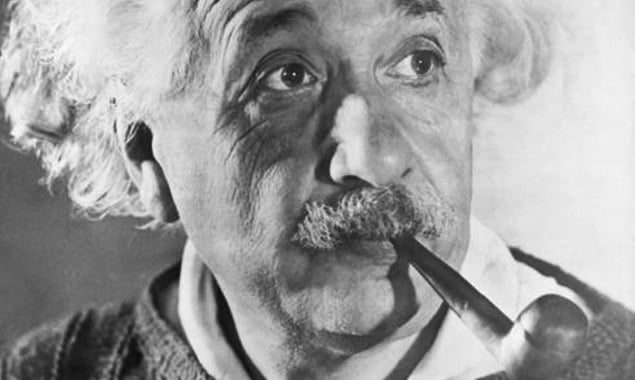
According to LD lore, Einstein failed to talk until age four, resulting from a language disability. It is also claimed that Einstein could not read until age nine. To strengthen their case, LD proponents point to such facts that Einstein failed his first attempt at entrance into college and lost three teaching positions in two years.
While this makes a nice story, this widely believed notion is false, according to Ronald W. Clark’s comprehensive biography of Einstein and Subtle is the Lord: The Science and Life of Albert Einstein, a biography by Abraham Pais.
Early life
Pais states that although his family had initial apprehensions that he might be backward because of the unusually long time before he began to talk, Einstein was speaking in whole sentences by some point between the ages of two and three. Albert was introduced to his newborn sister when he was two-and-a-half years old. Expecting a toy, he asked, rather disappointedly, “Where are the wheels?”
According to Clark, a far more plausible reason for his relatively late speech development is “the simpler situation suggested by Einstein’s son Hans Albert, who says that his father was withdrawn from the world even as a boy.” Whether one accepts this interpretation, other information helps us to judge Einstein’s language abilities after he began to speak.
Einstein entered school at age six and, against popular belief, did very well. When he was seven, his mother wrote, “Yesterday Albert received his grades, he was again number one, his report card was brilliant.” At the age of 9½, Albert was accepted to the competitive Luitpold-Gymnasium. Had his grades in primary school not been above average, his entrance into the Gymnasium would not have been possible.
At the age of twelve, Einstein was reading physics books. At thirteen, after reading the Critique of Pure Reason and the work of other philosophers, Einstein adopted Kant as his favorite author. About this time, he also read Darwin. Pais states, “The widespread belief that he was a poor student is unfounded.”
Failing his college entrance exams
It’s true. Einstein did not pass the college exam the first time he took it. However, aside from being only sixteen, two years below the usual age, the plain fact was he did not study for it. His father wanted his son to follow a technical occupation, a decision Einstein found difficult to confront directly. Consequently, as he later admitted, he avoided following the “unbearable” path of a “practical profession” by not preparing for the test.
It is also true that, after graduating from the university, Einstein had difficulty finding a post. This was mainly because his independent, intellectually rebellious nature made him, in his own words, “a pariah” in the academic community. One professor told him, “You have one fault; one can’t tell you anything.”
Also true is that Einstein went through three jobs in a short time, but not because of a learning disability. His first job was as a temporary research assistant, the second as a temporary replacement for a professor who had to serve a two-month term in the army.
Clark remarks that it is “difficult to discover but easy to imagine” why Einstein held his third job as a boarding school teacher for only a few months: “Einstein’s ideas of minimum routine and minimum discipline were very different from those of his employer.”
Conclusion
In an article, “Was Einstein learning disabled? Anatomy of a myth” (published in 2004 in the Skeptic magazine, a revised version of an article that originally appeared in the March/April 2000 issue of the Journal of Learning Disabilities), Marlin Thomas concludes:
Given the meager basis for the claim that Einstein was learning disabled, one has to wonder why it has become so accepted. Part of the reason is the encouragement it gives all of us to know that even geniuses have shortcomings. The claim also enhances the prestige of learning disabled individuals. Any marginalized group benefits from having one of its members be a stellar figure in cultural history. These may be salutary, but the consequence of claiming that Einstein was learning disabled without historical evidence is harmful. It distorts the historical record and it questions the credibility of other claims regarding the learning disabilities of prominent persons.
.
2. Leonardo da Vinci
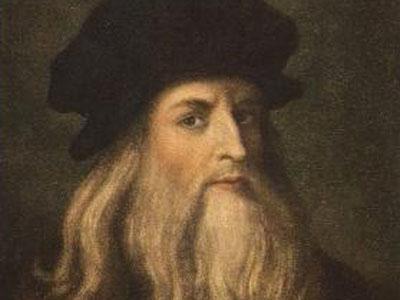
Leonardo da Vinci, an Italian Renaissance painter most popularly known for his fresco The Last Supper and his painting Mona Lisa, was also a sculptor, engineer, architect, inventor, scientist, and naturalist. Leonardo is also known for his dyslexia because he wrote his notes backward, from right to left, in a mirror image.
It should be noted, however, that Leonardo wrote this way by choice, not because he had dyslexia. He wrote in the normal direction when writing something intended for other people.
No one knows the true reason Leonardo used mirror writing, though several possibilities have been suggested:
- He was trying to make it harder for people to read his notes and steal his ideas.
- He was hiding his scientific ideas from the powerful Roman Catholic Church, whose teachings sometimes disagreed with what Leonardo observed.
- Writing left-handed from left to right was messy because the ink just put down would smear as his hand moved across it. Leonardo chose to write in reverse because it prevented smudging.
.
3. Thomas Edison
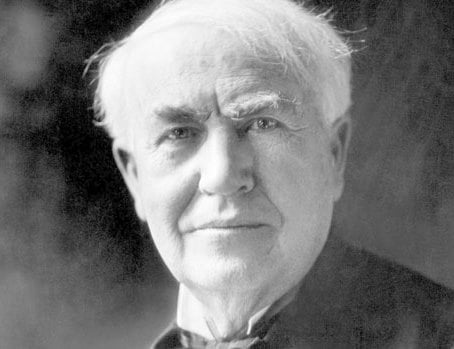
Thomas Edison was an American inventor and businessman who developed many important devices. Edison is considered one of the most prolific inventors of his time. He held 1,093 U.S. patents and many in the United Kingdom, France, and Germany. Apparently, he also had dyslexia.
Edison was often ill as a child and, therefore, started school later than he otherwise would have. Although he did have problems when he finally went to school, these problems were a result of his social behavior, not his mental abilities.
School not a good place for Tom
Tom’s overworked and short-tempered teacher finally lost his patience with the child’s persistent questioning and seemingly self-centered behavior. Noting that Tom’s forehead was unusually broad and his head was considerably larger than average, he made no secret of his belief that the youngster’s brains were “addled” or scrambled.
His mother promptly withdrew Tom from school and began home-teaching him. Not surprisingly, she was convinced her son’s slightly unusual demeanor and physical appearance were merely outward signs of his remarkable intelligence.
Josephson (1959) quoted Edison as saying that R. G. Parker’s School of Natural Philosophy was “the first book in science I read when a boy.” At the age of 9, his mother had him reading Gibson’s Decline and Fall of the Roman Empire, Hume’s History of England, and literary classics ranging from Shakespeare to Dickens. Josephson concluded: “While immature and ill-disciplined in some respects, he was advanced in others and soon became a very rapid reader.”
Fastest reader with no patience
When Edison went back to school at age 11 and was forced to share reading books with two other children, he was by far the fastest reader and had no patience for his fellow students. Conot (1979) noted that the boy enjoyed his new public school. But his ears periodically became inflamed, and his hearing was uncertain. Consequently, he was frustrated because he could not hear what the teacher was saying; he asked questions when she expected the class to listen and did not respond when she asked questions.
Clearly, Edison was handicapped at school, but by an aural disability, not a learning disability. Indeed, as a learner, he seems to have been well ahead of others, especially in his precocious reading and science interests and abilities.
Edison left school at the age of 12 and began work selling newspapers. As Conot said, it was standard in those days for boys to go to work at the age of 12; only the larger cities had a high school, and enrollments beyond the sixth grade mainly consisted of offspring of the well-to-do.
.
4. Walt Disney
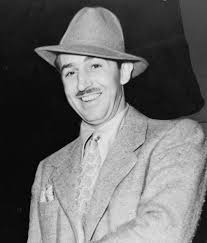
Walter Elias “Walt” Disney was an American film producer, director, screenwriter, storyteller, voice actor, and animator. He and his staff created several of the world’s most popular animated properties, including the one many consider Disney’s alter ego, Mickey Mouse.
Disney was also the cartoon artist of comic books and newspaper comic strips, the creator of an American-based theme park called Disneyland, and the co-founder with his brother Roy O. Disney of Walt Disney Productions, the profitable corporation now known as The Walt Disney Company.
Cover story claims Walt had dyslexia
Walt Disney is also remembered for his dyslexia, or so it is claimed on numerous websites on the Internet, and in a cover story in Time Magazine, a story to which the Walt Disney Family Museum responded:
Experts about dyslexia are learning more and more about this problem and ways to treat it. It’s clear that while dyslexics have difficulties learning to read, they are often very bright — even extraordinary.
The cover story in the July 28 issue of Time Magazine thoroughly and articulately gives readers a solid understanding of the current state of understanding about dyslexia. It points to a number of ‘role models’ who are dyslexic including Tom Cruise, Whoopi Goldberg and Jay Leno.
Why are we mentioning this in the Walt Disney Family Museum? Because Walt Disney is also on Time Magazine’s list of prominent dyslexics. And there’s a problem with that. Walt was not dyslexic.
Says Dave Smith, Director of the Walt Disney Archives, ‘There is no indication anywhere in Walt’s history that he ever had dyslexia, either in his childhood or during his business career.’
dys-lex-ia\ n: ‘an affliction affecting a person’s ability to read, usually associated with a mental process that causes distorted perceptions of letters and words.’
The reputable biographies of Walt make no reference to his having dyslexia. He never made reference to any difficulty reading and he wrote fluidly. His difficulties in school — which may have led one to think there was some kind of learning disability — were almost certainly tied to fatigue. From age ten on, Walt was up before dawn delivering newspapers before school. What’s more, he had a variety of other jobs that took his time and kept him from concentrating on schoolwork.
In fact, had Walt suffered from this syndrome, the Family Museum would happily boast about the fact, and make certain that he was a known role model for young people battling with the obstacles dyslexia can present.
But given the number of myths that exist about Walt, it is nonetheless disturbing to witness yet another one entering the public mind. We called Time, and asked how they reached their conclusion. The short answer: The magazine assembled already-published lists of people with dyslexia. Then they did an Internet search of those people, and where they found any refutation of this idea (as with Albert Einstein) they took them out of the list. The remainder, they assumed, had dyslexia.
To be sure, there are scores of references on the Internet that link Walt and dyslexia. Many are from respectable organizations. But repetition without refutation is hardly a sign of anything other than widespread ignorance.
It is an honor of sorts that these groups want to claim Walt as a role model. But, honor or not, it doesn’t make it true. And one of the primary goals of the Family Museum is helping to obliterate myths — even complimentary ones — about Walt Disney, in order to preserve the truth about the man and his legacy.
.
5. Winston Churchill
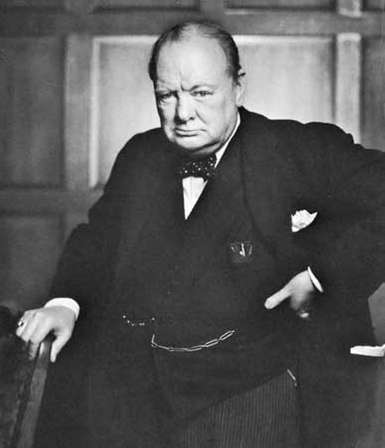
Sir Winston Leonard Spencer Churchill (1874 – 1965) was a British politician known chiefly for his leadership of the United Kingdom during World War II. He served as Prime Minister of the United Kingdom from 1940 to 1945 and again from 1951 to 1955. Churchill was a noted statesman and orator, an officer in the British Army, a historical writer, and an artist. He is also remembered for his dyslexia.
No dyslexia, states Centre
According to The Churchill Centre, however, Winston Churchill did not have dyslexia and had no learning disability whatsoever:
In his autobiography, he played up his low grades at Harrow, undoubtedly to convince readers, and possibly himself, how much he had overcome; but in this he exaggerated. He was, actually, quite good at subjects he enjoyed and, in fact, won several school prizes. The best source on his actual school performance is Jim Golland’s Not William — Just Winston (Harrow: 1988), still available from the Harrow School Bookshop.
Writing career
Churchill began his literary career at 24 with campaign reports: The Story of the Malakand Field Force (1898) and The River War (1899), an account of the British campaign in Sudan and the Battle of Omdurman.
In 1900, Churchill published his only novel, Savrola, and, six years later, his first major work, the biography of his father, Lord Randolph Churchill. His other famous biography, the life of his great ancestor, the Duke of Marlborough, was published in four volumes between 1933 and 1938.
Churchill’s history of the First World War appeared in four volumes under the title The World Crisis (1923-29); his memoirs of the Second World War ran to six volumes (1948-1953/54). After he retired from office, Churchill wrote A History of the English-speaking Peoples (4 vols., 1956-58).
His magnificent oratory survives in a dozen volumes of speeches, among them The Unrelenting Struggle (1942), The Dawn of Liberation (1945), and Victory (1946). Churchill, a gifted amateur painter, also wrote Painting as a Pastime (1948). An autobiographical account of his youth, My Early Life, appeared in 1930.
To be exact, Churchill wrote 43 book-length works and received the Nobel Prize in literature in 1953.
Churchill had a lisp
The disability he suffered was a lisp — not a stutter, as some believe. Churchill was unable to pronounce the letter “s.” He fought to overcome this but never entirely succeeded. Instead, he gradually made it a distinctive part of his oratory, turning a liability into an asset.
This is undoubtedly something young people should find motivating, but it is inaccurate to suggest that he had dyslexia.
.
6. Hans Christian Andersen
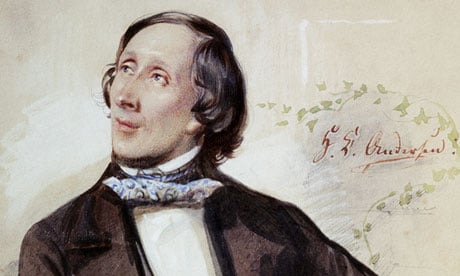
Hans Christian Andersen was a Danish author and poet most famous for his fairy tales. Among his best-known stories are The Steadfast Tin Soldier, The Snow Queen, The Little Mermaid, Thumbelina, The Little Match Girl, The Ugly Duckling, and The Red Shoes.
During Andersen’s lifetime, he was feted by royalty and acclaimed for having brought joy to children across Europe. His fairy tales have been translated into over 150 languages and continue to be published in millions of copies worldwide.
According to many sources on the Internet and even scholarly books like Corinne Roth Smith’s Learning Disabilities: The Interaction of Learner, Task, and Setting (Boston: Allyn and Bacon, 1991), Andersen had dyslexia.
Early life
Born in 1805 as the son of Hans Andersen, a poor but self-educated shoemaker, and Anne Marie Andersdatter, an illiterate washerwoman, Andersen grew up in the slums of Odense. From 1810-11, he attended two “pogeskoler” (infant schools). After that, his school attendance was somewhat haphazard, especially after his father died in 1816. His mother sent the 11-year-old to work in a tailor’s shop and later a tobacco factory to help support the family. Unhappy with these jobs, he left home at the age of fourteen to seek his fortune in Copenhagen.
As a young teenager, Andersen became quite well known in Odense as a drama reciter and singer. Although determined to become a national success on the stage, Hans failed miserably but made some influential friends in Copenhagen who got him into school to remedy his lack of proper education.
In 1822, Jonas Collin, one of the directors of the Royal Theatre and an influential government official, gave Andersen a grant to enter the grammar school at Slagelse. He lived in the home of the school headmaster Meisling, who was annoyed at the oversensitive student and tried to harden his character. Other pupils were much younger, 11-year-olds, among whom the six years older Andersen was overgrown. His appearance also drew unwanted attention — he had a long nose and close-set eyes.
In 1827, Collin arranged private tuition for Andersen, and he gained admission to Copenhagen University, where he completed his education.
Success as a writer
In 1829, Andersen gained his first success, not as an actor but as a writer, with A Walk From Holmen’s Canal to the East Point of the Island of Amager in the Years 1828 and 1829. Despite its unwieldy travelogue title, this was a tale of fantasy inspired by the work of E. T. A. Hoffmann.
Although today Andersen is primarily known as a writer of stories for children, during his lifetime, he was also celebrated for his other literary works, including six novels, five travel journals, three autobiographies, and numerous poems and plays. According to Terri Windling,
the modern image of Andersen (as portrayed in the sugary 1952 film Hans Christian Andersen, starring Danny Kaye) is of a simple, innocent, child-like spinner of tales, a character from one of his own stories. Letters and diaries by Andersen and his contemporaries, however, draw the picture of a very different man: a sharply intelligent, ambitious writer with a hardscrabble past, a love of high society, and a tortured soul. Likewise, when read in the original Danish (or in good, unabridged translations), Andersen’s fairy tales are far more sophisticated and multi-layered than the simple children’s fables they’ve become in all too many translated editions, retellings, and media adaptations. The writer was no innocent naïf recounting fancies whispered by the fairies; he was a serious artist, a skillful literary craftsman, a shrewd observer of human nature and the social scene of nineteenth-century Denmark.
Allegations of dyslexia “unfounded”
In an article, “Hans Christian Andersen’s spelling and syntax: Allegations of specific dyslexia are unfounded,” published in the November 2000 issue of the Journal of Learning Disabilities, Kihl, Gregersen, and Sterum concluded that Andersen did not have dyslexia. The article is summarized as follows:
Sources contemporary with Danish author Hans Christian Andersen claimed that he did not master the Danish language, which modern studies interpret as specific dyslexia. A systematic study of his diaries from age 20 to age 70 found a mean spelling error percentage of approximately 1.7 (SD = 1%, range = 0%-4%). A methodologically independent reliability study confirmed these figures. Andersen’s error percentages in poems and letters from ages 11 to 19 show a typical initial part of a learning curve that, together with the results from the diaries, gives a life span curve of his spelling development. The diaries, letters, and poems contain only insignificant syntactic errors. Andersen’s spelling in the above studies is compared with that of his contemporaries and with data from modern studies. His mean error percentages at different ages are equal to the figures from non-disabled participants, but between 2 and 15 times lower than the mean percentages in studies of individuals with dyslexia. A structural analysis of Andersen’s spelling errors shows that they are mainly phonologically plausible from ages 11 to 70, and that the proportions of plausible/implausible errors match those of normal achievers, but not those of individuals with dyslexia.
Edublox offers cognitive training and live online tutoring to students with dyslexia, dysgraphia, dyscalculia, and other learning disabilities. Our students are in the United States, Canada, Australia, and elsewhere. Book a free consultation to discuss your child’s learning needs.
.
References and sources:
Adelman, K. A., & Adelman, H. S. (1987). Rodin, Patton, Edison, Wilson, Einstein: Were they really learning disabled? Journal of Learning Disabilities, 20(5), 270–279.
Conot, R. (1979). A streak of luck. New York: Seaview Books.
Clark, R. W. (2007). Einstein: The life and times. New York: Avon Books.
Josephson, M. (1959). Edison. New York: McGrawHill.
Kihl, P., Gregersen, K., & Sterum, N. (2000). Hans Christian Andersen’s spelling and syntax: Allegations of specific dyslexia are unfounded. Journal of learning disabilities, 33, 506-519.
Pais, A. (1982). Subtle is the lord: The science and the life of Albert Einstein. Oxford: Oxford University Press.
Smith, C. R. (1991). Learning disabilities. The interaction of learner, task, and setting. Boston: Allyn and Bacon.
Thomas, M. (2004). Was Einstein learning disabled? Anatomy of a myth. Skeptic, 10(4).
Windling, T. (2003). Hans Christian Andersen: Father of the modern fairy tale. TerryWindling.com.


